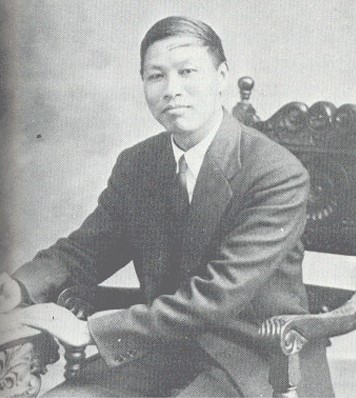Watchman Nee

Watchman Nee or Nee T’o-sheng (Chinese: 倪柝聲) (1903–1972) is perhaps the most well-known of Miss Barber’s pupils. Born in Fuzhou in 1903, he and his mother He-ping found salvation in Christ through Dora Yu’s preaching in 1920. It was Dora Yu who suggested Nee and his mother go to M. E. Barber; they were baptized in 1922 by the sisters at White Teeth Rock.
Most of the anecdotes from M. E. Barber’s last years come from Watchman Nee’s messages. He often recounted his experiences with her and shared her lessons for the broader edification of the Christians around him. (James Reetzke in A Seed Sown in China includes an appendix with all his anecdotes.)
Nee spent much time on the weekends with Miss Barber. He was just one of a dozen or so passionate young converts who were under her care. Miss Barber was a hard shepherd, and used many opportunities to teach him to bear the cross. She was deeply concerned for his spiritual education and feared his appetite for “head knowledge”. To D. M. Panton she wrote, “These two young men [Nee and Faithful Luke] are in great danger. They have a mental apprehension of God’s Truth which unless lived out will be their peril.” Later, she commented to Faithful Luke about Nee, saying, “He will become a great preacher.” 1
Through M. E. Barber, Watchman received a deep spiritual discipleship and was also brought into connection with European ministries which would shape his doctrine and vision. He was introduced to the impactful Bible expositions of J. N. Darby and C. A. Coates. He took Madame Guyon and Andrew Murray from her bookshelf. He saw her turn to Jessie Penn-Lewis’ and T. Austin-Sparks’ magazines for fresh ministry. And he was shaped by the teachings of her friend D. M. Panton.
In 1933, Nee had the opportunity to visit England and America as a guest of the “Exclusive Brethren.” Aside from a brief visit to Honor Oak Christian Fellowship—where T. Austin-Sparks happened to be absent—he traveled only within the Brethren’s circles. He spent much time in their fellowship, attending large gatherings and private interviews on both continents. Two years later, he commented on his trip to his co-worker Witness Lee, saying, “It is hard to find someone who can compare with Miss Barber.” 2 and later remarked, “If Miss Barber were still here, our situation would be different.” 3
Upon her passing, she left some of her belongings to Nee, specifically her Bible. While there were other young laborers close to her, this gesture shows something of their relationship. Later, Nee collected her letters, lectures, and other writings. He had thought to produce a biography of M. E. Barber but, sadly, time was not found and these papers have been lost.
Shortly after Miss Barber’s death, Nee published the first hymnal used by the “Little Flock churches.” This small hymnal, Hymns for the Little Flock included nine of M. E. Barber’s hymns and gives us insight into which of her poems were considered the best and which were in use outside of White Teeth Rock at that time.
Footnotes
1 - Kinnear, Angus. Against the Tide: The Unforgettable Story of Watchman Nee (p. 58). CLC Publications. Kindle Edition.
2 - Reetzke MEB page 8. Compare with Lee’s Three Aspects of the Church, Book 2: The Course of the Church, Chapter 17, Section 1
3 - See both sources above.